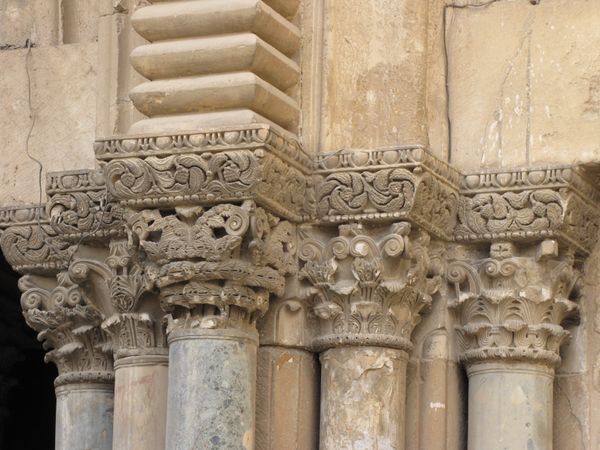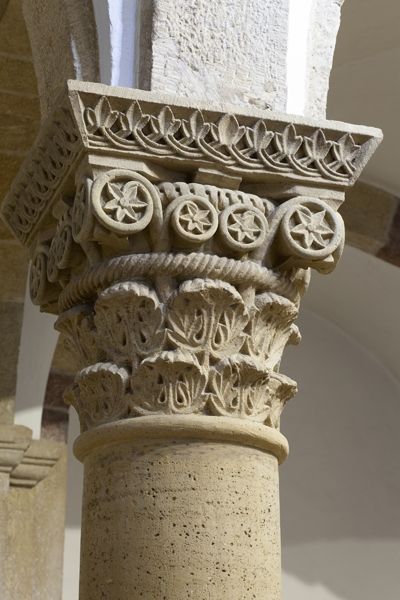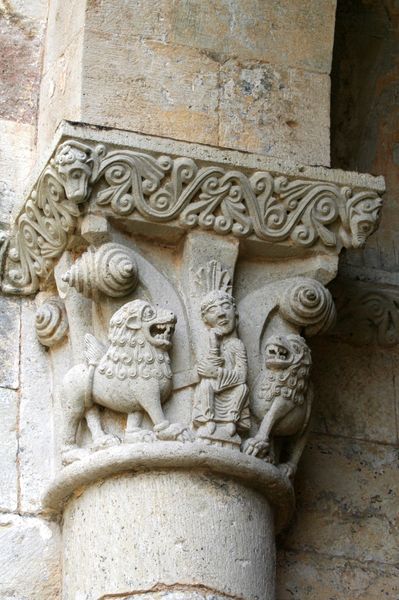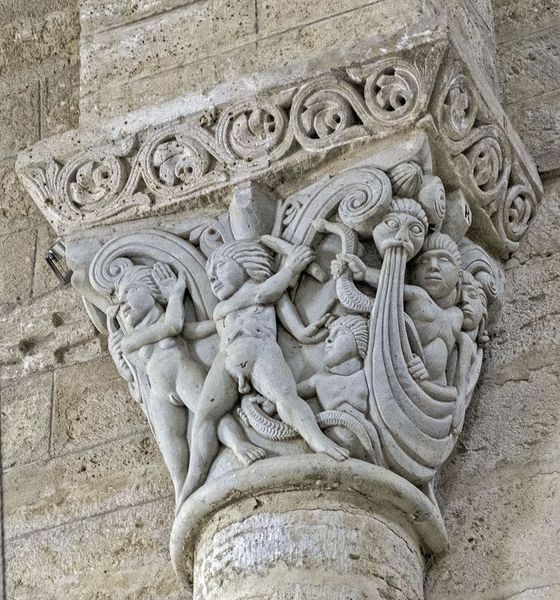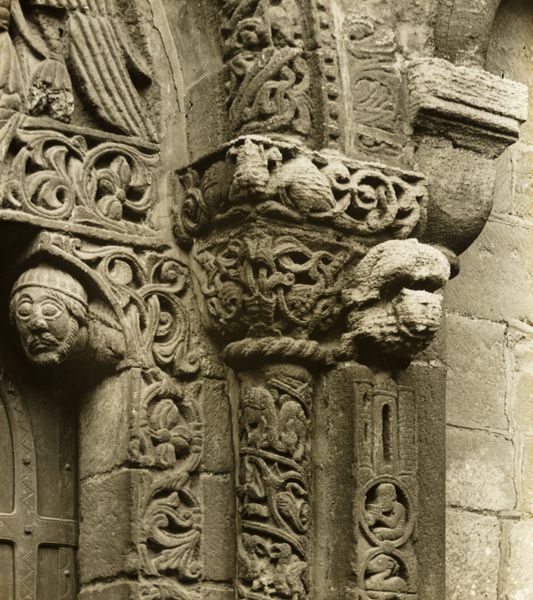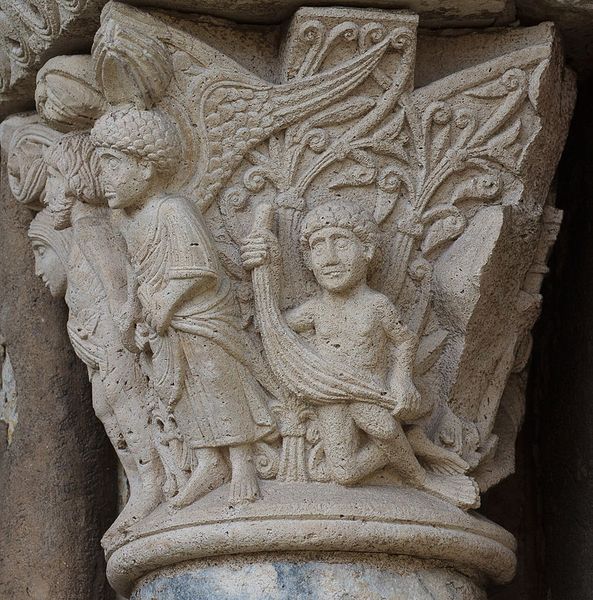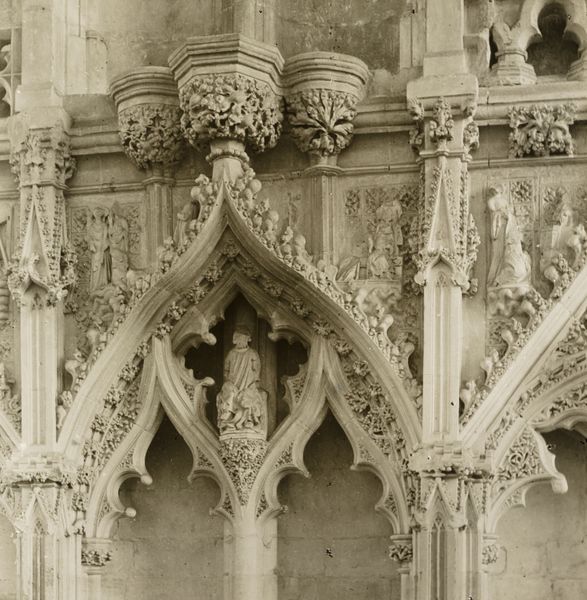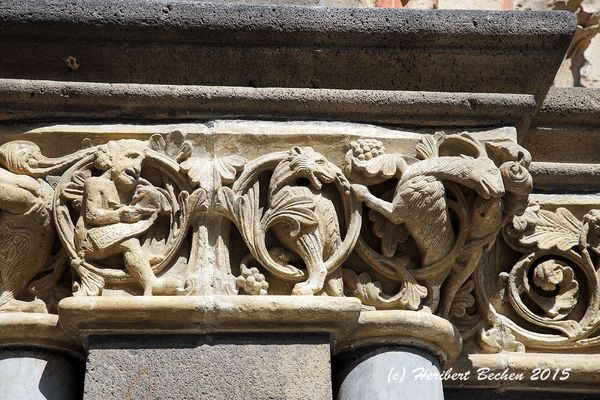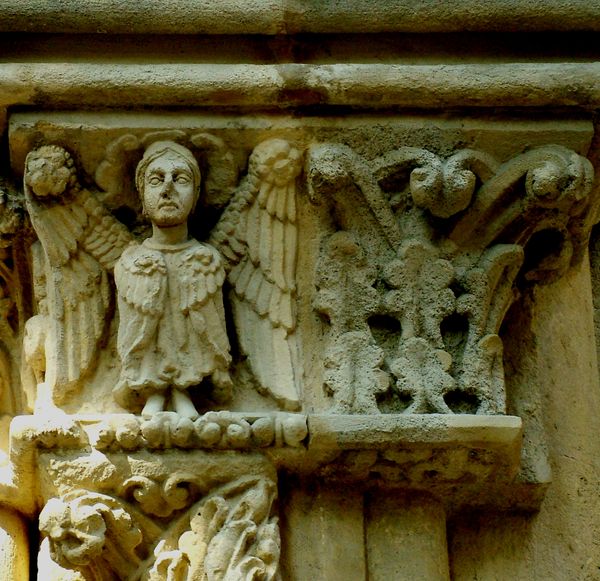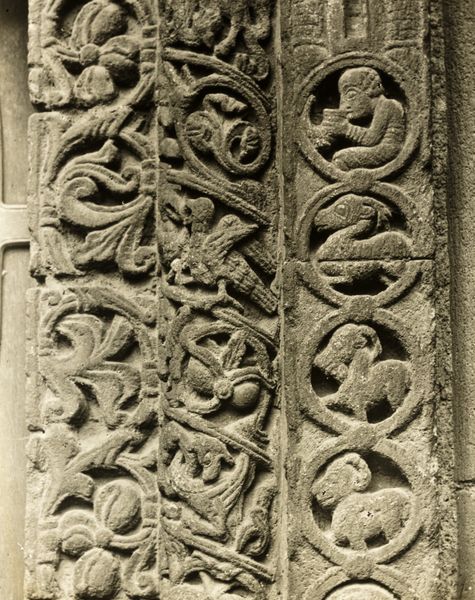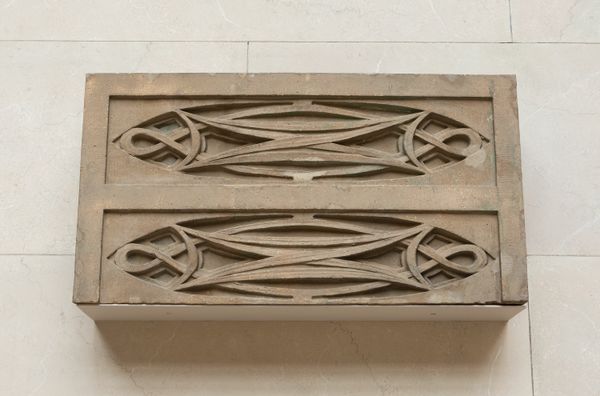
carving, sculpture, architecture
#
medieval
#
carving
#
sculpture
#
figuration
#
romanesque
#
sculpture
#
architecture
Copyright: Public domain
This Romanesque capital, part of Angoulême Cathedral in France, was carved from limestone sometime between the 11th and 13th centuries. Look closely, and you'll see how the stone's inherent qualities - its relative softness, its consistent color - have influenced the carving. The masons who created this capital would have used a variety of hand tools, including chisels, gouges, and mallets. Their skill transformed the raw material into a riot of intricate designs. Note the depth of relief. This was no small feat. The process demanded not only artistic vision but also intense physical labor, reflecting the social realities of the time. The very act of making, the countless hours of skilled work, are integral to its meaning. By focusing on the material and the making, we gain a deeper appreciation for the artistry and cultural significance embedded within this architectural element.
Comments
No comments
Be the first to comment and join the conversation on the ultimate creative platform.
